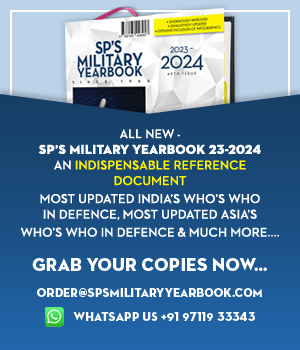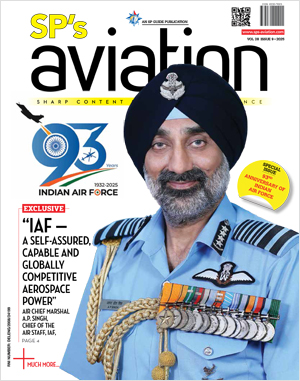INDIAN ARMED FORCES CHIEFS ON OUR RELENTLESS AND FOCUSED PUBLISHING EFFORTS
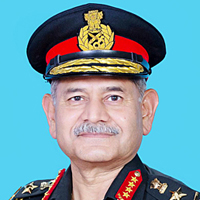
The insightful articles, inspiring narrations and analytical perspectives presented by the Editorial Team, establish an alluring connect with the reader. My compliments and best wishes to SP Guide Publications.
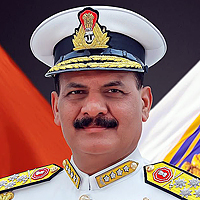
"Over the past 60 years, the growth of SP Guide Publications has mirrored the rising stature of Indian Navy. Its well-researched and informative magazines on Defence and Aerospace sector have served to shape an educated opinion of our military personnel, policy makers and the public alike. I wish SP's Publication team continued success, fair winds and following seas in all future endeavour!"

Since, its inception in 1964, SP Guide Publications has consistently demonstrated commitment to high-quality journalism in the aerospace and defence sectors, earning a well-deserved reputation as Asia's largest media house in this domain. I wish SP Guide Publications continued success in its pursuit of excellence.
Capability Analysis - A Credible Balance
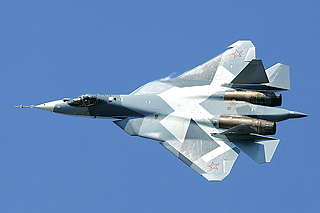
In the coming decade, the IAF has to acquire the capability to deter the PLAAF from contemplating ‘active defence’ in the skies over India or challenge the freedom of the IAF to patrol India’s area of interest in the Indian Ocean
The Indian Air Force (IAF) and the People’s Liberation Army Air Force (PLAAF) of China are the two dominant regional air forces in Asia, each with its own strategic imperatives and tactical objectives. The IAF has been battle tested many times in the past 60 years while the PLAAF has not been involved directly in any conflict since the Korean War. Numerically, the PLAAF overwhelms the IAF, but its inventory consists mainly of aircraft of an earlier generation. No meaningful comparison can be carried out of these two air forces at this juncture as they are both in the course of a major upgradation programme.
The turn of the century saw the IAF with its fighter squadrons depleted way below the government authorised strength, the transport squadrons valiantly carrying out their routine air maintenance tasks with an ageing fleet and the helicopter fleet in urgent need of replacement with modern helicopters. The flying training establishments were beset with their problems of insufficient trainer aircraft for the advanced stage of flying training and a basic trainer plagued with an insurmountable engine problem. Many of the IAF’s bases lacked the infrastructure worthy of the fourth largest air force in the world. The Indian Air Force recognised its limitations and the Government of India approved a massive modernisation plan, which will transform the IAF into a formidable force.
In the next decade, the modernisation of the fighter fleet will see either the Eurofighter consortium Typhoon or Dassault Rafale equip the frontline squadrons with 126 new aircraft, the veteran MiG-21s will be gone, the IAF has contracted for 272 Su-30 MKI and the Mirage 2000 upgrade would have been completed. After the midlife upgrade, the improved MiG-29 fighters would be available to the squadrons, the Jaguar force would have been fitted with better engines and new avionics and the light combat aircraft (LCA) Tejas in squadrons. Hopefully, the fifth generation fighter aircraft (FGFA) jointly developed by Russia and India would be entering service.
The transport aircraft fleet would have got its full complement of C-17 Globemaster III and the C-130J aircraft. The An-32 fleet would have undergone life extension upgradation and fitted with a new avionics suite that would comply with International Civil Aviation Organisation (ICAO) standards. If the Indo-Russian development of the multi-role transport aircraft meets the stipulated timelines, these would also be entering service.
The helicopter fleet is to get a complete makeover with the induction of the Hindustan Aeronautics Limited (HAL) advanced light helicopter (ALH), light combat helicopter (LCH) and the light utility helicopter (LUH). The Mi-35 attack helicopter would be replaced either by the Boeing AH-64 Apache or Mi-28 and the heavy lift Mi-26 replaced by the CH-47 Chinook or the new improved Mi-26. The workhorse of the IAF, the old Mi-17 would have made way for the new Mi-17 IV.
Force multipliers like aerial refuellers and airborne warning and control system (AWACS) would give the IAF greater legs and better command and control of the battle zone. The IAF has also embarked on an ambitious programme to upgrade the infrastructure to support the new inductions and in the first phase upgrade 30 major airfields.
The modernisation of IAF’s aircraft and helicopter fleets, the upgradation of airfield infrastructure, modern logistics management and networked command, control, communication and intelligence systems will make the IAF a potent force capable of meeting its strategic objectives of protecting Indian airspace and deterring its neighbours from any adventurism or conventional warfare. The IAF would have also developed adequate stature to protect its vast exclusive economic zone (EEZ) and island territories while working in coordination with the Indian Navy and the Indian Coast Guard.
Despite the modernisation of the IAF in the next decade, the PLAAF would however still have the potential and capability to challenge the IAF. During the last two decades, the PLAAF has undergone modernisation of its fleet in conjunction with that of the aviation resources of the PLA Navy and with the planned upgradation in the next decade, it will be the most potent air force in Asia by 2020. The modernisation of the Chinese armed forces has been largely driven by its strategic priorities of reaching a critical economic and military mass by 2020 and becoming a world class economic and military superpower by the year 2050. China’s military strategy in the past was centred on its Taiwan policy but this changed in recent times. President Hu Jintao articulated a new mission statement for the “Armed Forces for the New Period of the New Century” in 2004, which was codified in the Chinese Communist Party Constitution of 2007.
These missions called upon the PLA to provide a strong security guarantee for safeguarding the period of strategic opportunity for national development; and provide a powerful strategic support for safeguarding national interest.
President Hu Jintao’s policy guidelines require the PLA to secure China’s strategic interests even outside its national territorial boundaries. ‘Active defence’ is the operational component of China’s national strategic guidelines for the new period. The tenets of this policy state, “Overall, our military strategy is defensive. We will attack only after being attacked, but our operations are offensive. Space and time will not limit our counter-offensive. We will not put boundaries on the limits of our offense. We will focus on the opposing force’s weaknesses.”
Active defence is not defensive in nature and the PLA Academy of Military Sciences expounds that an enemy strike is not limited to military action and can encompass even political action, to which the PLA will retaliate. Thus, PLA forces could be used preemptively in defence. The PLAAF has a leading role in China’s Active Defence Strategy and this would bring much of India under this concept. All the elements of China’s air power, whether they belong to the air force, navy, civil aviation, aviation industry including space assets can be seamlessly brought to bear against an adversary due to the unique Chinese High Command structure where the military leaders are members of the Central Military Commission, the apex body headed by President Hu Jintao and the Vice President Xi Jinping. This stands in stark comparison to the recent headlines in one of the leading English newspapers, which reported that the Defence Minister A.K. Antony had to step in to douse a turf battle between the Indian Army and the Air Force. Inter-Service and intra-Service turf battles are the order of the day.




